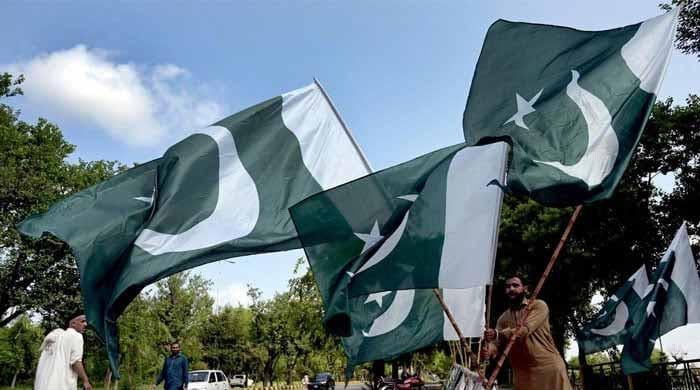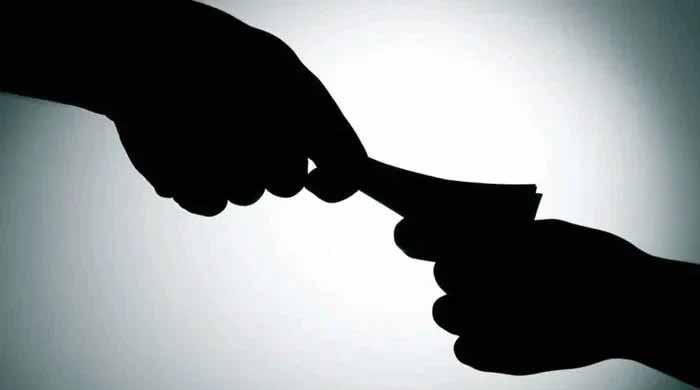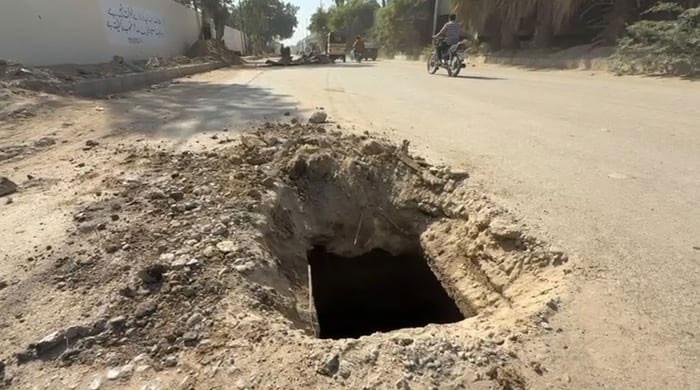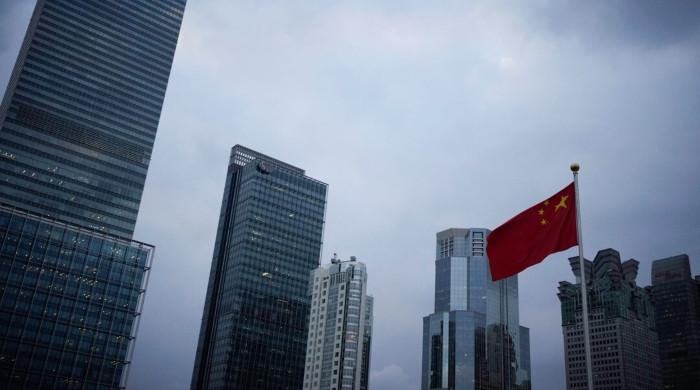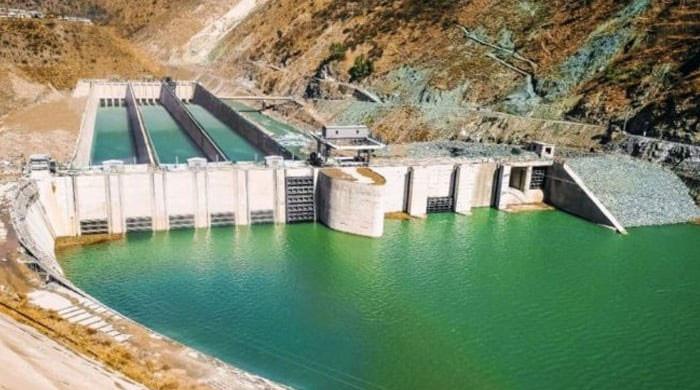Why Noorani was attacked
From Kamran Khan to Umar Cheema and from Matiullah Jan to Ahmad Noorani, attempts had been made to silence voices of journalists
October 31, 2017
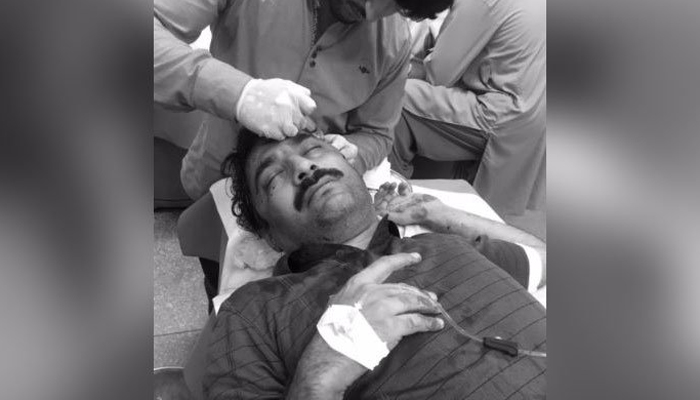
Investigation into the attack on investigative journalist Ahmad Noorani, a correspondent for The News and Jang, is underway and one hopes that the real culprits would be traced and the motive behind the attack would be found out. But, one thing is certain, and that is he was attacked for his news stories and the purpose, apparently, was to silence the voice of dissent. How can journalists save themselves from such a situation?
Investigative journalism has never been easy across the globe, but it is far more difficult here for a variety of reasons including the absence of the Right to Information Law.
There is little doubt that journalists like Umar Cheema and Ahmad Noorani come under attack for exposing some wrongdoings and their stories being disliked by certain people.
Journalists often are physically assaulted when their stories create difficulties for others and they have no answer except to harass them and their families. This is exactly what happened in the case of Umar Cheema, Ahmad Noorani and recently with Matiullah Jan.
I still have doubts that the assailants would be arrested, but if they are arrested, it would be big news, considering the track record in cases of violence against journalists. Optimistic.
There is little doubt that Ahmad Noorani was attacked for anything but his journalistic works. Now, one can disagree with some of his stories, but under no circumstance, physical assault on journalists could be condoned or accepted. On the contrary, the attack itself showed that those who disliked his story or stories have no other answer to counter and thus they tried to silence him with a warning shot.
There is a long list of journalists, who came under attack in the past 10 or 15 years. They have been threatened, harasses, beaten and at times, killed. Investigative journalists particularly become the target of such attacks. From Kamran Khan to Umar Cheema and from Matiullah Jan to Ahmad Noorani, attempts had been made to silence their voices and when it proved to be in vain, they were subjected to physical violence.
Over 100 journalists had been killed in the line of duty, many were injured; some faced paralysis, others survived but still facing the danger. All this took place in the last 15 years. What is the way out and how journalists can save themselves, at least minimise the risk factor up to 60 to 70 per cent. I always believe that in case any journalist loses his life in the line of duty, his story must not die.
I came to know young Noorani through his stories in The News and Jang. I don't agree with all his stories, but his works clearly showed the amount of investigation and work he does, something which we don't find in today's journalism, which is 'race against time’. There are some very good investigative journalists in Pakistan, and I personally know that most of them remained under threat, from one quarter or the other. Constant attacks on journalists or journalism are a reminder for journalists about the dangers and their vulnerability. Three journalists in Sindh were killed in one day in 1989. Till this day, there are only three cases of journalists in which investigation showed any progress: Danial Pearl, Wali Khan Babar and Munir Sangi. Some other cases are also pending, but little progress has been made so far.
Journalists and media safety and security need to be divided in three categories.
(1) Precaution required if you are under threat or at risk.
(2) Responsibility of the government or the state; in case of an attack, investigation, and prosecution; and (3) Responsibility of the media houses, for providing safety training and proper insurance cover.
Not many people know the kind of risk we, as journalists, face and it is very important to protect and save this noble profession. There is no two opinions that the media has to be more responsible, without any agenda, and full protected.
It is important that journalist must reassess and re-evaluate risk, particularly if he or she is working on stories of sensitive nature. Both journalist and the editor, or in case of TV, director news, must know the possible dangers involved in the story. Thus, they must take some precautions after the story.
A good and exclusive story always gives a journalist satisfaction of exposing some wrongdoings, but at the same time it has generally believed, there is no story worth getting killed. Still the passion for the profession often allowed journalist to take risks for benefits.
Islamabad, being the federal capital, may be a safe city for general public, but not for journalists. From the late Saleem Shahzad to Ahmad Noorani, journalists came under serious threats for years. Who can forget what happened to Cheema, one of the best investigative reporters in the country, along with some other colleagues, like Rauf Kalasra and Ansar Abbasi.
It is good that the federal government has constituted a high-level probe committee and DG ISPR Major General Asif Ghafoor has also assured army's full cooperation in ensuring the arrest of the culprits, it is important that it should not take too long as happened in most of the cases in the past.
There are also number of journalists in the capital, who often complain about being chased, and getting threatening SMS. What happened in the case of veteran anchor Syed Talat Hussain was not different, as the manner in which the social media is being used often put you on the hit list.
I was going through the guide notebook, published by the Committee for Protection of Journalists (CPJ) for reporters working in dangerous situations. We need something like that, particularly for those who worked in dangerous environments.
This excellent work was done after the brutal murder of US reporter, Danial Pearl, after he was kidnapped and later his beheaded body was found. The incident coincided with the killing of eight reporters in Afghanistan. Three years later, similar kind of kidnapping incident took place in Oct 2005, when a Pakistani journalist, Hayatullah was abducted from Federally Administered Tribal Areas (Fata), and his body was found after five months.
I have worked on a number of cases of journalists killed or attacked. In many cases, where journalists were killed in the line of duty, the stories on which they were working also died and were never followed.
Journalism is a passion not just a profession. Journalists, who work 24 hours in search of a story, exclusive or explosive, often faced threats and warnings; they were shot at or actual shot. Those who considered it a passion faced these hazards, depending on his or her work. They care more for deadline, and in the process they often become the headline, as happened in the case of investigative journalist of The News and Jang, Ahmad Noorani.
Attack on Noorani was a message for him as well as for some others. It did not happen for the first time nor it would end, but this is also a message from journalists to assailants: ‘You do your work, we will do ours’.
Journalists are often criticised, not always for the wrong reasons, and even faced criticism for doing stories on particular agenda, but the answer should come in the form of denial or legal course, not in the form of physical attack, as happened in the recent cases and attack of Noorani.
Journalists in Pakistan, not only come under attack from one group or the other, from one institution or the other, but in the case such as Balochistan, they have become a sandwich between agencies and outlawed groups. Already a record number of journalists had been killed in the last few years in the province.
Journalists must remember one thing: there are no set of principles, training or safety belt guaranteeing 100pc security, but it certainly makes you much more comfortable, secure and satisfied if you are trained, fully covered and know the possible risks.
Above all, a true professional also knows the worth of his story and risks involved. Once he files a story, and it is well received among the readers and viewers, but at the same time dislike and not well received by those whom he has exposed, he feels satisfied that it was worth taking the risk, irrespective of the consequences.
One can only hope that the media houses, journalist bodies and other stakeholders would sit together and take steps to protect journalists and media and will not wait for another Ahmad Noorani or Umar Cheema happening.
We all like to see Noorani back in the newsroom soon with his exclusive stories after early recovery and with same energy and passion.
Originally published in The News




